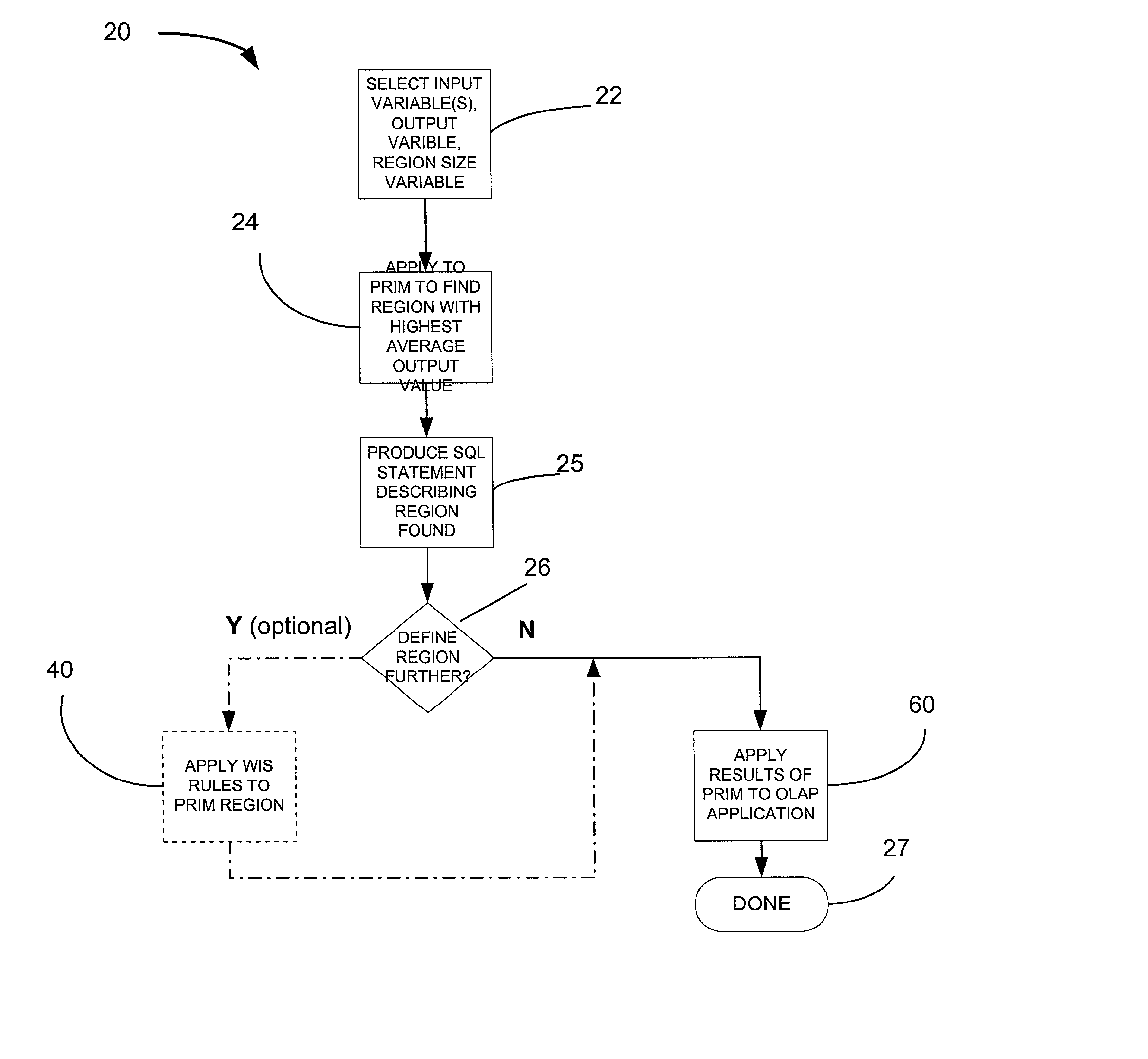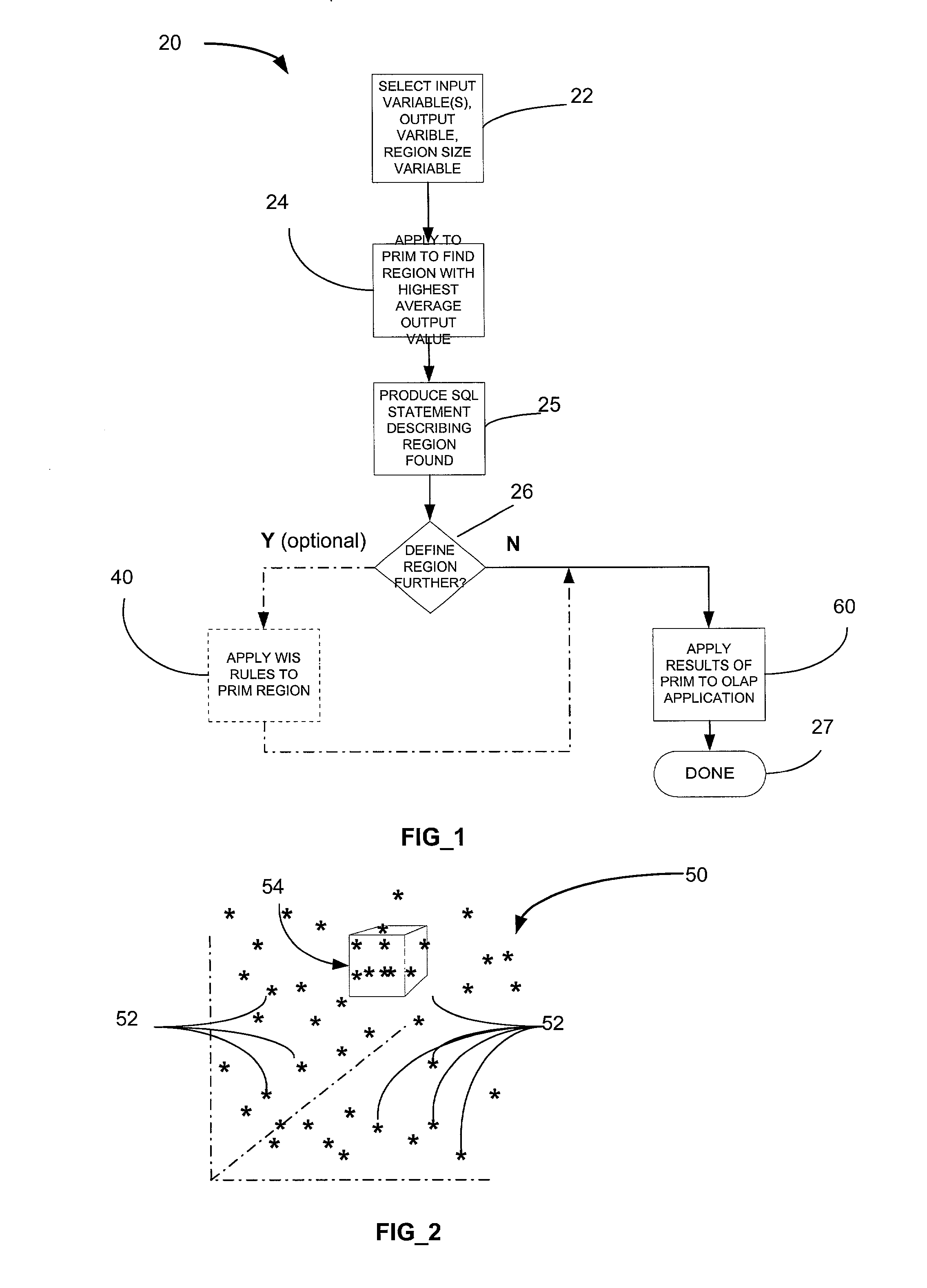Analysis of massive data accumulations using patient rule induction method and on-line analytical processing
a technology of patient rule and analysis method, applied in data processing applications, instruments, data mining, etc., can solve the problems of inability to process and analyze such massive amounts of data, and inability to meet the needs of large-scale data collection
- Summary
- Abstract
- Description
- Claims
- Application Information
AI Technical Summary
Benefits of technology
Problems solved by technology
Method used
Image
Examples
Embodiment Construction
[0032] An overview of the invention is shown generally by the flow chart of FIG. 1, which broadly identifies the major steps of the invention. Generally, the method of the invention: or method has three steps:
[0033] 1) First find an interesting region, represented by facts / rules.
[0034] 2) Perform detailed analysis of the region using OLAP, including comparing subset of records with remaining records in the population. OLAP can be used to compare the highest average region and / or a sub-region.
[0035] 3) Perform a second detailed analysis on the region using OLAP, including comparing subset of records with the entire population of records. OLAP can be used to compare the highest average region and / or a sub-region.
[0036] The order of steps 2 and 3 is unimportant and either step is optional.
[0037] An optional step, following step 1, and before step 2, is to find interesting rules describing the region.
[0038] The following paragraphs walk through each of these four steps. Then a specific ...
PUM
 Login to View More
Login to View More Abstract
Description
Claims
Application Information
 Login to View More
Login to View More - R&D
- Intellectual Property
- Life Sciences
- Materials
- Tech Scout
- Unparalleled Data Quality
- Higher Quality Content
- 60% Fewer Hallucinations
Browse by: Latest US Patents, China's latest patents, Technical Efficacy Thesaurus, Application Domain, Technology Topic, Popular Technical Reports.
© 2025 PatSnap. All rights reserved.Legal|Privacy policy|Modern Slavery Act Transparency Statement|Sitemap|About US| Contact US: help@patsnap.com



